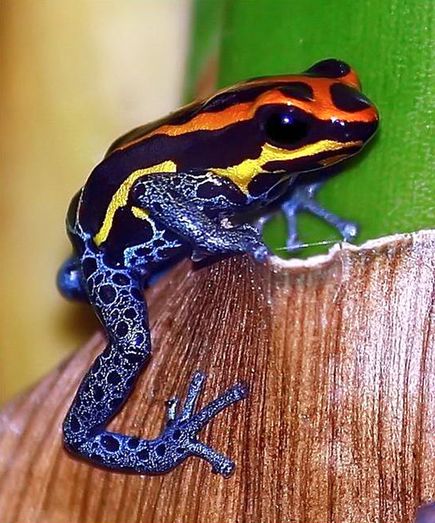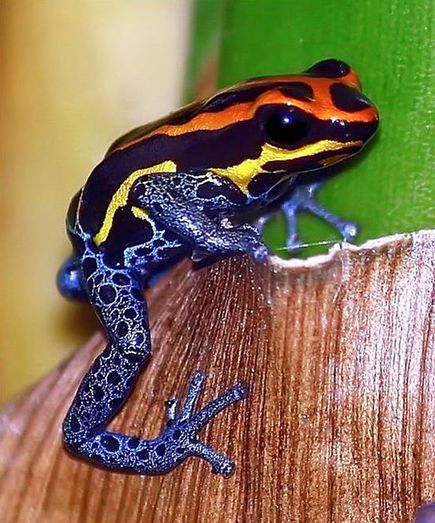With all the bad news churning out about yet more species joining the endangered list daily, it’s exciting to learn that unknown species are still being discovered.
In fact, more than 1,200 new species of plants and vertebrates were identified in the Amazon rain forest alone between 1999 and 2009, according to a new report from the international conservation group World Wildlife Fund (WWF) that highlights the region’s biodiversity. That’s one new species every three days – a testimony if there ever was one to the Amazon’s incredibly varied and prolific life forms.
Among the new finds are a blue-fanged tarantula and the flamboyant poison dart frog Ranitomeya amazonica, which sports an orange ‘flame’ atop its head and a blue ‘bubble bottom.’
A bizarre discovery found just last year in the Amazon River in Peru & Brazil is the electric knife fish, which sends high-frequency electrical waves to communicate. Males have long, narrow snouts and jaws with rows of tiny, razor-sharp teeth, which they lock in battle over mates and nesting sites.
One more colorful revelation that has thrilled birders is the bald parrot, with its brilliant green body, scarlet-edged wings, chartreuse neck collar and rusty-orange head. It may be no wonder that it’s flown under cover for so long: it’s found in only two regions of the Brazilian Amazon, the Lower Madeira River and the headwaters of the Tapajós River. Both habitats are threatened by logging, says WWF.
According to WWF, at least 17 percent of the Amazon rain forest has already been cut for cattle ranching or to grow crops for animal feed and biofuels. That’s an area larger than Venezuela, or twice the size of Spain. And the pace of deforestation is increasing, especially as ranching continues to expand. That’s grim news for the ecosystem that houses 1 in 10 known species, and may be home to up to 30% of all species on Earth, says Meg Symington, a tropical ecologist and WWF’s managing director for the Amazon.
Many species of plants and animals in the Amazon have direct human health benefits in medicines, and the rainforest as a whole is an important regulating force for the earth’s climate.
WWF’s report detailed 637 plants, 257 fish, 216 amphibians, 55 reptiles, 16 birds and 39 mammals that were discovered in the Amazon from 1999 to 2009. It did not include figures for most of the newly found invertebrates, which would have boosted the count far higher. The report was released during last week’s meeting of the UN’s Convention on Biological Diversity, when representatives of 193 nations met in Japan to discuss how to protect the diversity of life on Earth.
“This report clearly shows the incredible diversity of life in the Amazon and what we could lose if we don’t act now,” said Francisco Ruiz, Leader of WWF’s Living Amazon Initiative. “We need to change the way we think about development and promote conservation at a regional level that provides economic, social, and environmental benefits to people in the region and those within the Amazon’s far-reaching climatic influence.”
Responsible eco-tourism is an important means of helping to protect regions like the Amazon whose natural treasures are disappearing due to human destruction. Natural Habitat Adventures, which is the Conservation Travel Provider for WWF, offers several adventures that immerse you in the Amazon rainforest, where you’ll be utterly amazed at the species you’ll observe. Just watch out that you don’t get too close to the world’s newest anaconda – the first identified since 1936!
For starters, check out the Amazon trips on our website:
Amazon and Machu Picchu Adventure, Family Amazon and Machu Picchu, or our riverboat journey on the luxurious Amazon Clipper, an extension to our Brazilian Pantanal adventure that is a journey into biodiversity in its own right. We also offer an Amazon eco-lodge adventure to Napo Wildlife Center, featured as an extension to our Galapagos trips, and an Ecuador voluntourism experience working with children in some of Quito’s poorest neighborhoods.
Thanks for caring about conservation,
Wendy


































